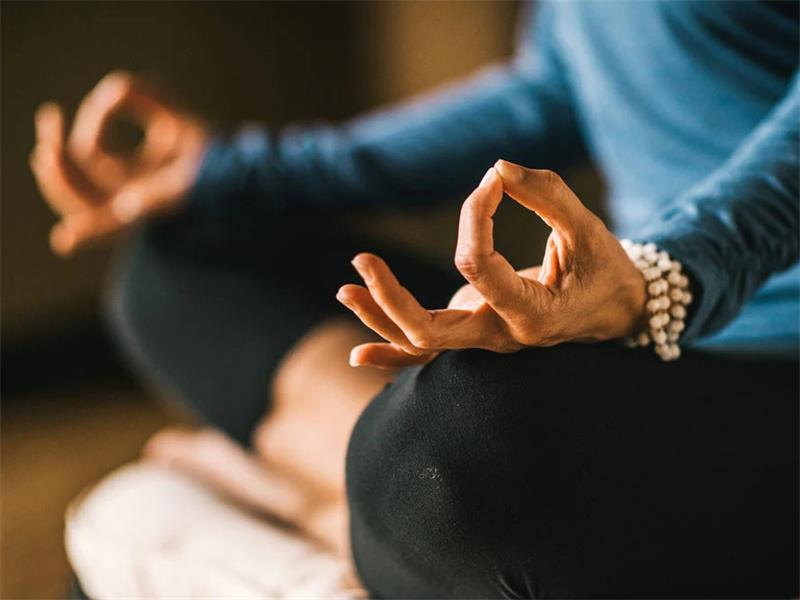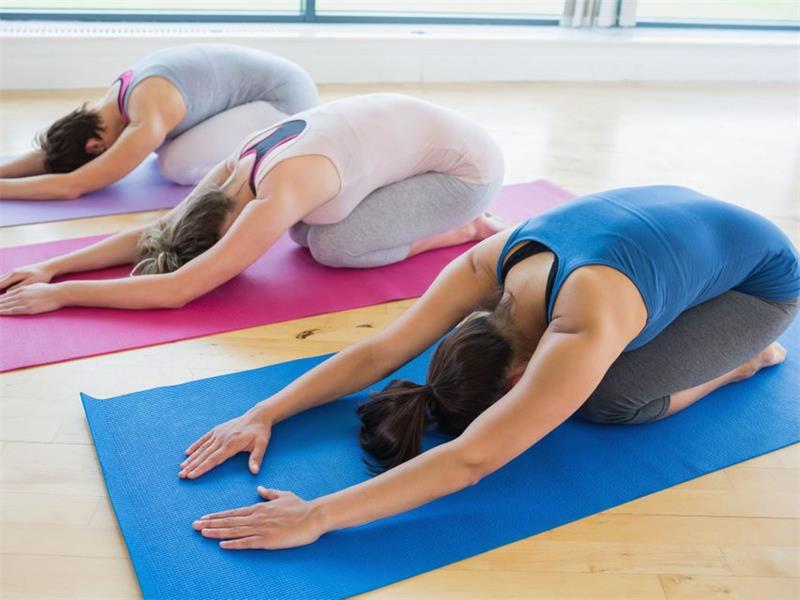Contents
Introduction
A Brief Explanation of Mindfulness and Its Benefits
Mindfulness is the practice of being fully present in the moment, without judgment or distraction. It involves intentionally paying attention to what is happening around us and within us, including our thoughts, emotions, and physical sensations. The benefits of practicing mindfulness are numerous and have been scientifically proven.
Firstly, mindfulness has been shown to reduce stress and anxiety. By tuning into the present moment and accepting it as it is without judgment or resistance, we become less reactive to stressors in our daily lives.
This can lead to a calmer mind, improved mood, and better overall well-being. Additionally, mindfulness can improve focus and concentration.
With regular practice, we train our minds to stay in the present moment instead of getting distracted by past or future thoughts. This can enhance productivity at work or school and improve performance in other areas of life.
The Importance of Practicing Mindfulness for a Calmer Mind
In today’s fast-paced world filled with constant distractions from technology and media, it’s easy to become overwhelmed and stressed out. Practicing mindfulness can help us slow down and find peace amidst the chaos.
By taking time each day to tune into our inner selves and be present with whatever is happening around us, we build resilience against stressors that come our way. Furthermore, cultivating mindfulness can lead to greater self-awareness.
We learn more about ourselves – our thought patterns, and emotional triggers – which can help us better understand why we feel a certain way at any given moment. With this knowledge comes greater self-compassion; we learn how to treat ourselves kindly even when things get tough.
Overall, practicing mindfulness is an essential tool for anyone looking for greater peace of mind in their daily lives. In the following sections of this article on How To Practice Mindfulness for a Calmer Mind, we will cover some easy techniques to get started with mindfulness.
Getting Started with Mindfulness
Finding a quiet and comfortable space to practice
One of the most important aspects of practicing mindfulness is finding a space where you can feel relaxed and comfortable. This could be your bedroom, a quiet corner in your living room, or even outside in nature.
It’s important to choose a location that feels peaceful and calming for you. Creating an environment that is conducive to mindfulness can help you get into the right mindset for practice.
Try to minimize distractions as much as possible – turn off your phone, close the door, or put on noise-canceling headphones if needed. Being free from interruptions will allow you to fully immerse yourself in the present moment.
Setting aside time for daily practice
Consistency is key when it comes to mindfulness practice. It’s important to set aside some time each day for intentional mindfulness practice. Whether it’s 5 minutes or an hour, commit to making this a part of your daily routine.
Consider scheduling your mindfulness practice at the same time each day so that it becomes a habit. Maybe it’s right after waking up in the morning or before going to bed at night – whatever works best for you personally.
Choosing a focal point for your attention (e.g. breath, body sensations)
The next step is choosing what specifically you’ll be focusing on during your mindfulness practice. This could be anything from the sensation of air moving in and out of your nostrils during breathing exercises, feeling each part of your body during a body scan meditation, or simply focusing on an object like a candle flame. The point of having this focal point is not necessarily to “clear” our minds completely but rather to focus our attention on something specific so we can become more aware of our thoughts and emotions without getting lost in them.
Remember that there isn’t necessarily one “right” way to practice mindfulness – experiment with different techniques until you find what resonates with you. The goal is to cultivate a sense of present-moment awareness and a greater understanding of our own minds and emotions.
Mindful Breathing Techniques
Belly Breathing
When practicing belly breathing, also known as diaphragmatic breathing, you’ll focus on expanding your abdomen as you inhale and contracting it as you exhale. Find a comfortable seated position and place your hands on your belly. As you inhale, feel your belly expand beneath your hands.
As you exhale, feel it contract back towards your spine. This technique can help calm the nervous system and reduce stress levels.
Counting Breaths
Counting breaths involves focusing on the breath and counting each inhalation and exhalation until you reach a predetermined number. Start with a small number like 5 or 10 and gradually increase over time.
As you count each breath, try to focus solely on the sensation of air moving in and out of your body. If your mind starts to wander, gently bring it back to the counter without judgment.
Focusing on Air Sensations in the Nostrils
Focusing on the sensation of air moving in and out of your nostrils is another effective technique for developing mindfulness in breathing. Sit comfortably with a straight spine and bring attention to the feeling of air passing through your nostrils with each inhale and exhale. Notice any temperature or texture changes as well as how the sensations differ between each nostril.
Incorporating these mindful breathing techniques into daily practice can help cultivate a calmer mind by bringing attention to one’s breath while reducing distractions that often lead to stress or anxiety. Experiment with different techniques until finding what works best for them before integrating into their routine practice for optimal results.
Body Scan Meditation: Bringing Awareness to Your Body
When we are busy and stressed, our thoughts and emotions can take over. It’s easy to lose touch with our bodies and ignore the signals they are sending us. Body scan meditation is a simple but powerful practice that helps bring you back into your body and connect with yourself on a deeper level.
To begin, find a comfortable position lying down on your back or sitting in a chair with your feet flat on the ground. Take a few deep breaths and close your eyes.
Start at the top of your head and slowly scan down through your body, noticing any sensations or tension as you go. As you focus on each area of your body, try to release any tension you feel by consciously relaxing those muscles.
You might notice areas that feel tight or sore – this is normal! Just observe those sensations without judgment or trying to change them.
Bringing Awareness to Each Part of Your Body
As you scan down through each part of your body, pay attention to how it feels. Does it feel heavy or light? Warm or cool?
Are there any areas that feel particularly tense? Notice any thoughts or emotions that arise as you scan through each part of your body.
It’s common for our minds to wander during this practice – don’t worry if this happens! Simply acknowledge the thought and gently bring yourself back to focusing on the current area of the body you’re scanning.
Remember, the goal of this practice is not perfection but rather awareness. By bringing attention to each part of our body, we can learn about ourselves and become more attuned to what our bodies need.
Releasing Tension
The physical tensions in our bodies often mirror the emotional tensions in our minds. When we hold onto stress, anxiety, or other negative emotions, it can manifest as physical tension throughout our bodies. By releasing that tension through body scan meditation, we can create a sense of relaxation and calmness throughout our whole being.
This can also help us manage stress and anxiety in our daily lives by giving us a tool to tune into our bodies and release tension as needed. Remember, this practice is not a quick fix but rather a journey.
The more you practice body scan meditation, the easier it will become to connect with your body and notice any areas of tension or discomfort – both physical and emotional. Give yourself time and space to explore this practice and see how it can benefit you in your life.
Mindful Movement Practices
Yoga or Stretching with Intention and Focus on Breath
When it comes to mindful movement practices, yoga and stretching are two of the best options available. These activities provide an opportunity to connect with your body, focus on your breath, and let go of any stress or tension you may be feeling. Yoga is a form of exercise that combines physical postures (asanas) with breathing techniques (pranayama) and meditation (dhyana).
The practice is designed to improve strength, flexibility, balance, and overall health. When practicing yoga mindfully, the focus is on the present moment experience of each pose and breath.
By being fully present in the body and breathing during yoga practice, practitioners can cultivate a sense of inner calmness that carries over into their daily lives. Stretching is another form of mindful movement that can be done with intentionality and focuses on the breath.
When stretching mindfully, the goal is not just to increase flexibility but also to become more aware of your body sensations in each stretch. You can start by taking a few deep breaths before stretching and then moving slowly into each stretch while paying attention to how your muscles feel as you move.
Walking Meditation: Paying Attention to Each Step and Sensation
Walking meditation is a type of mindfulness practice that involves paying attention to the physical sensations associated with walking. This technique cultivates awareness of our bodies as we move through space. To begin walking meditation practice, find a quiet place where you can walk without distractions.
Begin by standing still for a few moments while breathing deeply in through your nose and out through your mouth. Then begin taking steps at a slow pace while shifting your attention onto every aspect of the act–the movement itself; any sounds made along the way; footstep rhythm–all in an effort to clear your mind and stay in the moment.
A good tip is to keep your eyes soft and unfocused, taking in the scenery around you without getting too caught up in specific details. This practice can be especially helpful for those who find it difficult to sit still during traditional meditation or who desire a more active form of mindfulness practice.
By anchoring our attention to something as simple as walking, we can cultivate mindfulness even amidst a busy day. As with any mindful practice, be patient and gentle with yourself–it may take some time to fully immerse yourself in the experience of walking meditation.
Mindful Eating: Savoring Every Bite
When was the last time you savored your food and enjoyed every bite? In our fast-paced lives, we tend to rush through meals without paying attention to what we are eating. This is where mindful eating comes in.
By practicing mindful eating, you can transform your relationship with food and enhance your overall health and well-being. One of the key principles of mindful eating is paying attention to the taste, texture, and smell of food.
It might sound simple, but it requires slowing down and being present at the moment. For example, when you eat a piece of fruit, take a moment to notice its color, shape, and aroma.
Chew slowly and savor the flavor as it evolves in your mouth. Pay attention to how it feels on your tongue and notice any changes in texture as you continue to chew.
Eating slowly is another important aspect of mindful eating. Our bodies take time to register fullness signals so if we eat too quickly we may end up overeating or feeling unsatisfied with our meal.
By slowing down and taking smaller bites, we give ourselves a chance to truly enjoy our food while also giving our body time to recognize when it’s full. Savoring each bite can be a game-changer for those who struggle with emotional or mindless eating habits.
Mindful eating encourages us to pause before reaching for that second serving or indulging in unhealthy snacks out of boredom or stress. Instead of using food as an escape or quick-fix solution for negative emotions, mindful eating helps us develop a more positive relationship with food by truly enjoying every bite without guilt or shame.
Practicing mindful eating can help us savor every bite while transforming our relationship with food for the better. Paying attention to taste, texture, smell and slowing down while we eat can help make mealtimes more enjoyable while also promoting healthier eating habits.
Cultivating Gratitude through Mindfulness
Focusing on Things You Are Grateful for in the Present Moment
Practicing gratitude is an essential part of mindfulness that can significantly contribute to a calmer mind. When we focus on things we are grateful for, we are training our minds to look for the positive and notice the good things in life. One way to do this is by starting each day with a gratitude practice.
Take a few moments to reflect on three things you are grateful for before you start your day. It’s also important to focus on gratitude throughout the day.
You can use mindfulness techniques like mindful breathing or body scan meditation to bring your attention back to the present moment and identify things you are grateful for. For example, while taking a walk, pay attention to the beauty of nature around you and feel grateful for it.
Reflecting on Positive Experiences Throughout the Day
Another way to cultivate gratitude through mindfulness is by reflecting on positive experiences throughout the day. Take some time at night before bed or during your daily mindfulness practice to think about three positive experiences that happened during your day.
Reflecting on positive experiences helps us appreciate the good things in life and cultivates a sense of happiness within us. It also helps us recognize that even in challenging times, there is always something positive we can focus our attention on.
A Final Thought On Cultivating Gratitude Through Mindfulness
The practice of cultivating gratitude through mindfulness will not only help us develop a calmer mind but will also improve our overall well-being and happiness levels. With regular practice, we train our minds to focus more on positivity, which has been linked with numerous health benefits like lowered stress levels and improved sleep quality.
Remember that practicing gratitude doesn’t mean ignoring negative emotions or challenging experiences; rather, it means shifting our focus towards positivity and cultivating a more resilient mindset. So, take some time each day to reflect on the good things in your life, and you’ll be amazed at how it can transform your overall perspective and well-being.
Conclusion
In this article, we have explored the benefits of practicing mindfulness and techniques to help you achieve a calmer mind. By setting aside time for daily practice and focusing on your breath or body sensations, you can cultivate a greater sense of presence and awareness in your life.
One key takeaway from this article is that mindfulness is not just about finding inner peace or relaxation. It can also help us to respond more skillfully to difficult emotions, stressors, and challenges that arise in our lives.
When we cultivate awareness and acceptance through mindfulness, we are better equipped to navigate these experiences with grace and resilience. Another important lesson is that mindfulness is a skill that requires practice and patience.
It takes time to develop the ability to stay present with our thoughts and sensations without judgment or distraction. But by committing to a regular practice, even just a few minutes each day, we can slowly build our mindfulness muscle over time.
I encourage you to begin incorporating mindfulness into your daily routine as a way of cultivating greater self-awareness, reducing stress levels, improving focus and concentration, enhancing emotional regulation skills and experiencing an overall sense of peace and well-being in your life. By taking small steps each day towards achieving the calmer mind you desire, you can create positive changes in your life that will benefit both yourself and those around you.













